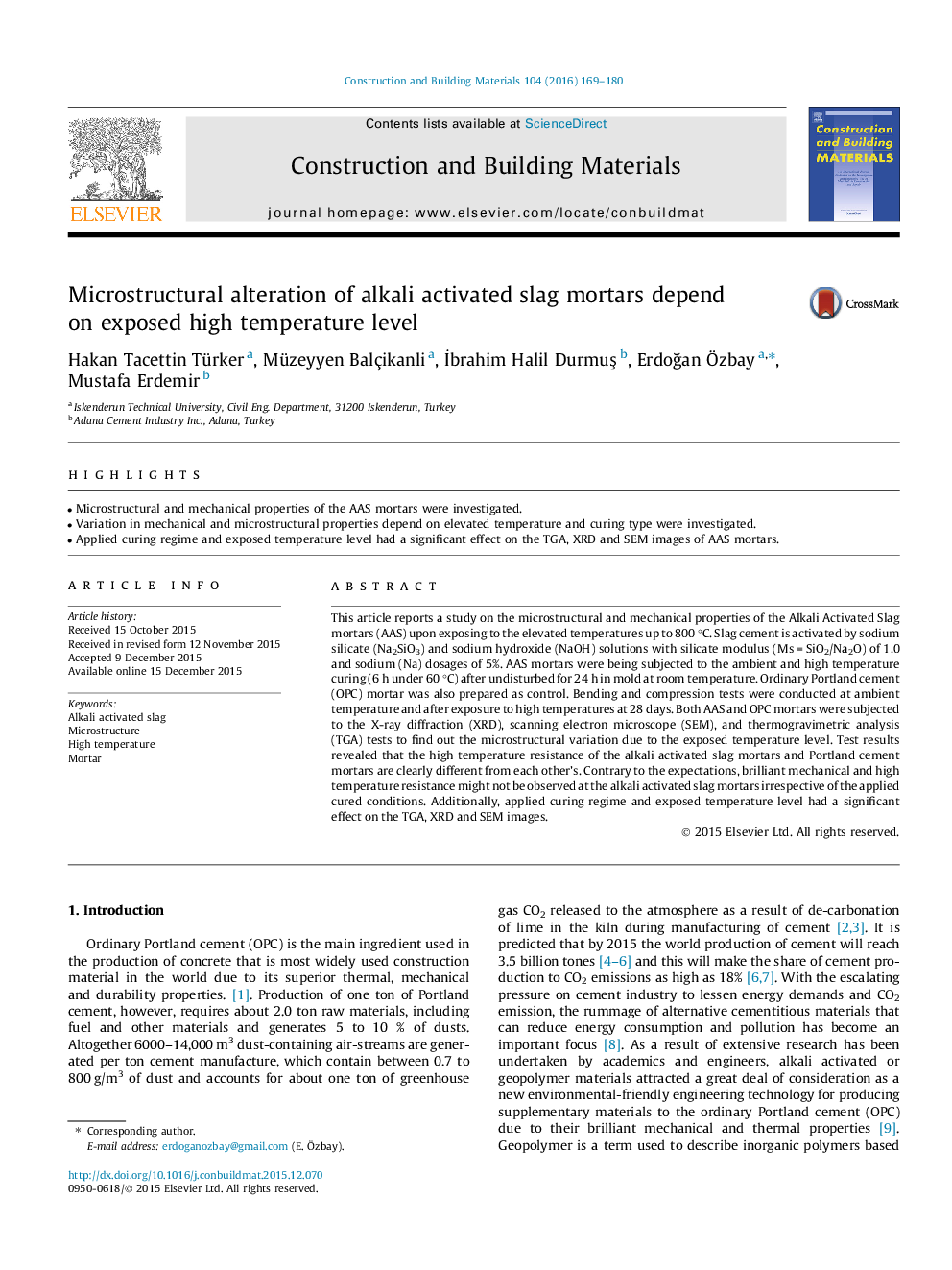| Article ID | Journal | Published Year | Pages | File Type |
|---|---|---|---|---|
| 256311 | Construction and Building Materials | 2016 | 12 Pages |
•Microstructural and mechanical properties of the AAS mortars were investigated.•Variation in mechanical and microstructural properties depend on elevated temperature and curing type were investigated.•Applied curing regime and exposed temperature level had a significant effect on the TGA, XRD and SEM images of AAS mortars.
This article reports a study on the microstructural and mechanical properties of the Alkali Activated Slag mortars (AAS) upon exposing to the elevated temperatures up to 800 °C. Slag cement is activated by sodium silicate (Na2SiO3) and sodium hydroxide (NaOH) solutions with silicate modulus (Ms = SiO2/Na2O) of 1.0 and sodium (Na) dosages of 5%. AAS mortars were being subjected to the ambient and high temperature curing (6 h under 60 °C) after undisturbed for 24 h in mold at room temperature. Ordinary Portland cement (OPC) mortar was also prepared as control. Bending and compression tests were conducted at ambient temperature and after exposure to high temperatures at 28 days. Both AAS and OPC mortars were subjected to the X-ray diffraction (XRD), scanning electron microscope (SEM), and thermogravimetric analysis (TGA) tests to find out the microstructural variation due to the exposed temperature level. Test results revealed that the high temperature resistance of the alkali activated slag mortars and Portland cement mortars are clearly different from each other’s. Contrary to the expectations, brilliant mechanical and high temperature resistance might not be observed at the alkali activated slag mortars irrespective of the applied cured conditions. Additionally, applied curing regime and exposed temperature level had a significant effect on the TGA, XRD and SEM images.
